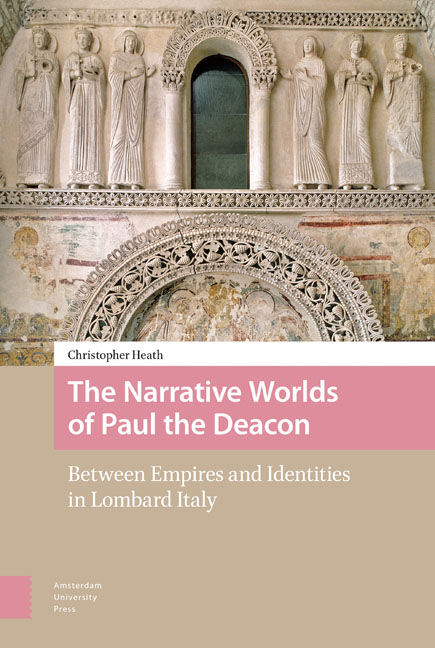Book contents
- Frontmatter
- Dedication
- Contents
- List of Tables and Diagrams
- Acknowledgements
- List of Abbreviations
- Introduction
- 1 Vir valde Peritus: Paul the Deacon and his Contexts
- 2 The Early Narratives
- 3 The Historia Langobardorum: The Structure of Paul’s World
- 4 The Historia Langobardorum: The Six Books in Detail
- 5 Conclusion
- Bibliography
- Index
2 - The Early Narratives
Published online by Cambridge University Press: 10 December 2020
- Frontmatter
- Dedication
- Contents
- List of Tables and Diagrams
- Acknowledgements
- List of Abbreviations
- Introduction
- 1 Vir valde Peritus: Paul the Deacon and his Contexts
- 2 The Early Narratives
- 3 The Historia Langobardorum: The Structure of Paul’s World
- 4 The Historia Langobardorum: The Six Books in Detail
- 5 Conclusion
- Bibliography
- Index
Summary
This chapter will analyse the structures of Paul's first three narratives i.e. the HR, the Vita Sancti Gregorii Magni, and the Gesta Episcoporum Mettensium as a prelude to a lengthier examination and discussion of the HL. Examining these three works will allow us to not only understand Paul's development as a writer and a historian, but also help us to understand how he put together his lengthiest and most important final work, the HL. For each of the three early narratives, we shall consider four principal issues: first, can a common narrative strategy be identified; secondly, do the works demonstrate evidence of Paul's approach to events and individuals; thirdly, did Paul develop his own voice in his works or remain bound to the restrictions implied by his client relationship with patrons; and fourthly how did he use and select his sources?
Before we proceed to consider these early narratives in turn, a note of their respective chronological relation to each other (and indeed the HL) is required. It is not possible to present an exact chronological order, but this study suggests that out of all of the works, the HR is the earliest. There remains the greatest doubt as to when the VGSM was composed and thus how it fits into the canon of Paul's works. However, it is demonstrable via later references in the HL that both it and the GEM were written, composed and completed on a significantly earlier occasion. Accordingly, this chapter will consider the HR first, the VGSM second, and conclude with the GEM.
‘Ita Romanorum apud Romam imperium … cum hoc Augustulo periit’ (Thus the Roman Empire at Rome … with this Augustulus perished): The Historia Romana
Paul's associations with Lombard courts in both the north and south of Italy first bore fruit with his extended and edited version of the Historia Romana. As we saw in Chapter 1, Paul's movement to the south of Italy can be linked to the matrimonial alliance between the Lombard king, Desiderius, and the Beneventan dux, Arichis II. Paul's surviving dedication in the work itself plainly indicates that it was conceived for the reading pleasure of Adelperga, who had been in some measure disappointed by the original work of Eutropius.
- Type
- Chapter
- Information
- The Narrative Worlds of Paul the DeaconBetween Empires and Identities in Lombard Italy, pp. 39 - 108Publisher: Amsterdam University PressPrint publication year: 2017

